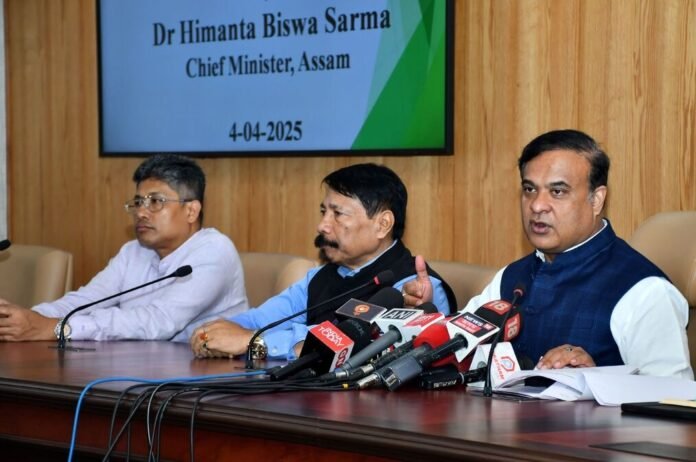The Assam Government has made a significant decision to mandate the use of Assamese as the compulsory official language for all government communications, including notifications, orders, and rules, across the state starting from 1st Bohag (April 15, 2025). This move aims to promote the Assamese language and ensure its uniform usage in all official capacities. The decision has sparked discussions, particularly with regard to its implementation in diverse linguistic regions of the state.
The government’s initiative emphasizes the importance of preserving and promoting Assamese as the principal language of the state. Chief Minister Himanta Biswa Sarma, while announcing the policy, expressed the commitment to elevate Assamese as the common language for official work, ensuring greater inclusivity in governance. According to the new guidelines, all state-run institutions and departments will now be required to use Assamese for their official correspondence. This includes schools, universities, government offices, and public service announcements.
The decision aligns with the government’s vision of strengthening the state’s cultural identity and fostering a unified administrative framework. Assamese, the mother tongue of a significant portion of Assam’s population, will now serve as a unifying medium in government communication. For years, the language issue has been a subject of debate in Assam, with various linguistic communities asserting the importance of preserving their native tongues while recognizing the need for a common official language. The policy seeks to strike a balance by making Assamese the primary language of governance while respecting the linguistic diversity in the state.
However, the policy also makes provisions for the continued use of Bengali and Bodo in regions where these languages are predominant. In Barak Valley, where Bengali is widely spoken, the use of Bengali will be promoted for government work, especially in areas where it is the primary language of communication. Similarly, in the Bodoland Territorial Region (BTR), Bodo will be used alongside Assamese for official purposes. This ensures that communities in these regions are not left behind in the state’s push for language standardization.
The announcement has drawn mixed reactions. Supporters of the move argue that it is a positive step for the preservation of Assamese culture and language. They believe that making Assamese the mandatory language for official communication will not only strengthen its use but also promote a sense of state pride and identity. Advocates for linguistic equality also appreciate the fact that the government has ensured the inclusion of Bengali and Bodo in their respective regions, demonstrating a commitment to preserving the rich cultural heritage of Assam’s diverse communities.
On the other hand, critics have raised concerns about the potential challenges in implementing the new policy. In regions where Assamese is not widely spoken, such as parts of Barak Valley and certain areas in the BTR, some fear that the sudden shift to Assamese may lead to confusion or alienation. Opposition leaders have questioned whether the policy will be practically enforceable in areas where local languages have a stronger presence, suggesting that the government may need to invest in additional resources for language training and awareness programs.
Additionally, the move has sparked debates about the broader implications of language policies in multi-lingual societies. Some have pointed out the importance of ensuring that no community feels marginalized in the process of adopting a common language. While Assamese will dominate official matters, there is an underlying recognition of the need to preserve linguistic diversity, a sentiment echoed by many within the government’s framework.
In the coming months, the government plans to roll out a series of initiatives to promote Assamese language education and ensure smooth implementation of the policy. Training programs will be introduced for government employees, and efforts will be made to develop Assamese-language resources to aid in day-to-day official tasks. The government has also emphasized that efforts will be made to preserve and promote the regional languages by fostering multilingualism within the framework of Assamese dominance.
As Assam embarks on this new chapter in its linguistic history, the government remains committed to striking a balance between modernization and the preservation of its rich cultural and linguistic heritage. While challenges lie ahead, the decision to make Assamese the official language of governance is seen as a step toward unity and cultural pride in a state that is home to a wide range of linguistic and ethnic communities.




